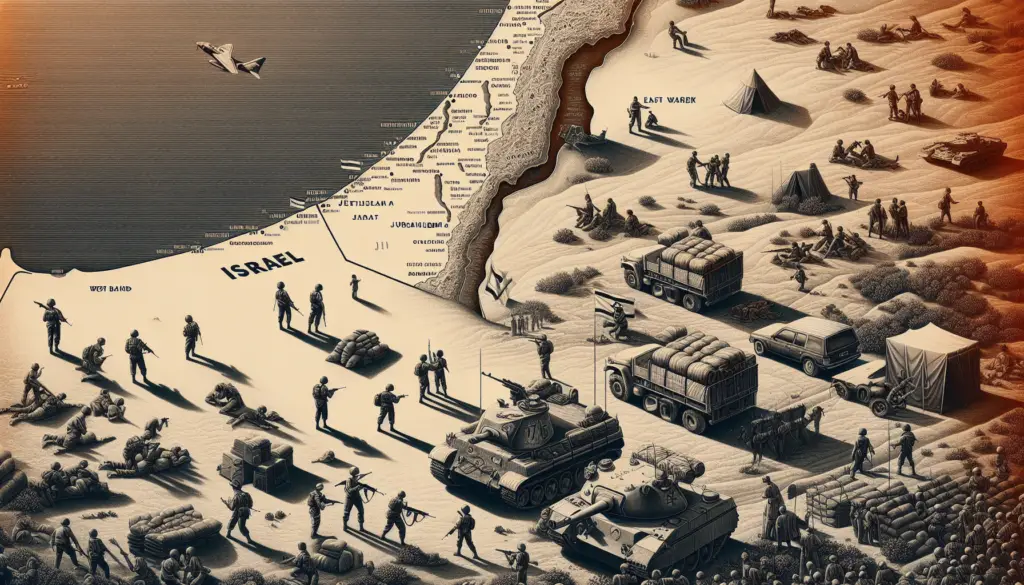The Six-Day War: A Pivotal Moment in the Arab-Israeli Conflict
The Escalating Tensions in the Middle East
The 1967 Six-Day War was a watershed moment in the long-standing Arab-Israeli conflict. The tensions in the region had been building for years, with a complex web of historical grievances, political aspirations, and territorial disputes. The war was the culmination of a series of events that had been unfolding since the establishment of the State of Israel in 1948, and it would have a lasting impact on the geopolitical landscape of the Middle East.
The Road to War
The immediate trigger for the Six-Day War was a series of escalating events in the months leading up to the conflict. In May 1967, Egypt’s President Nasser ordered the United Nations Emergency Force (UNEF) to withdraw from the Sinai Peninsula, which had been stationed there since the Suez Crisis of 1956. This move was seen as a provocative step by Israel, which viewed the UNEF as a buffer against potential Egyptian aggression.
Nasser then proceeded to mobilize Egyptian troops along the border with Israel and blockaded the Straits of Tiran, a vital shipping lane for Israel. These actions were interpreted by Israel as a direct threat to its security and sovereignty. Tensions continued to escalate, with both sides engaging in military posturing and rhetoric that further inflamed the situation.
The Six-Day War Begins
On June 5, 1967, Israel launched a preemptive strike against the Egyptian air force, destroying the majority of its aircraft on the ground. This marked the beginning of the Six-Day War, which would see Israel engage in a series of rapid and decisive military operations against its Arab neighbors.
Over the next six days, Israel’s forces swiftly defeated the armies of Egypt, Jordan, and Syria, capturing the Sinai Peninsula, the West Bank, East Jerusalem, and the Golan Heights. The speed and efficiency of the Israeli military operations caught the Arab states by surprise and highlighted the growing imbalance of power in the region.
Our Other Related Article : The First Arab-Israeli War

The Aftermath and Lasting Consequences
The Six-Day War had a profound impact on the geopolitical landscape of the Middle East. Israel’s stunning victory significantly strengthened its position in the region, while the Arab states were left reeling from the defeat. The war also led to the beginning of Israel’s occupation of the Palestinian territories, which would become a source of ongoing conflict and tension in the years to come.
The territorial gains made by Israel during the war also had long-term implications. The control of the Golan Heights, the West Bank, and East Jerusalem gave Israel strategic advantages, but also led to increased international criticism and the growth of the Palestinian resistance movement. The war’s aftermath would shape the course of the Arab-Israeli conflict for decades to come.
The Significance of the Six-Day War
The Six-Day War was a pivotal moment in the history of the Middle East. It demonstrated the growing military might of Israel and the relative weakness of the Arab states in the region. The war also marked the beginning of a new era of Israeli occupation and the ongoing struggle for Palestinian self-determination.
The legacy of the Six-Day War continues to reverberate in the Middle East today. The territorial gains made by Israel, the displacement of Palestinian populations, and the unresolved issues of sovereignty and security have all contributed to the enduring tensions in the region. Understanding the historical context and the lasting impact of this conflict is crucial for anyone seeking to comprehend the complexities of the Arab-Israeli conflict.
Conclusion
The Six-Day War of 1967 was a pivotal moment in the history of the Middle East. The rapid and decisive Israeli victory reshaped the regional balance of power and set the stage for decades of conflict and occupation. While the war may have been a military triumph for Israel, its aftermath has continued to shape the political and social landscape of the region, with lasting consequences that are still felt today.

